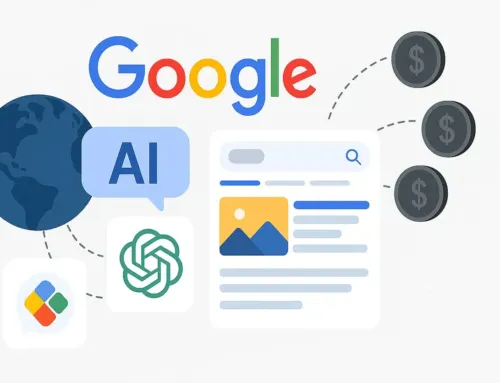9 Signs You Need A Website Refresh

Ever taken a step back and viewed your website through the eyes of your customers? Is it simple to navigate your way around? Does it load faster than you can finish a sip of coffee? Can your visitors effortlessly find answers to their key questions and requirements. From “Do they have what I need?” or “Can they do what I need?” to “Where is their phone number?”
Realising your website might need a refresh or website redesign often starts here.
If your site isn’t delivering a smooth and positive user experience or the navigation feels more like a maze, your potential customers will likely bounce to competitors.
Generally, it is recommended that businesses refresh their site’s look and feel every two to three years. This allows businesses to touch up lacklustre and non-performing areas and keep up with search engine algorithm updates and usage trends.
As everyone loves lists, here are the 9 key signs that signal it’s time for a website refresh.
Visual Appeal Matters
First impressions count. Whether you’re meeting with a potential new client, going on a first date or someone seeing your website for the first time. You need to make a great impression. As design trends shift, what was stylish a few years back may now seem outdated. If your site doesn’t grab a visitor’s attention quickly and get them digging deeper into your offerings, it’s high time for a refresh to stay relevant and appealing.
It’s All About User Experience
A great user experience keeps visitors on your site longer. It’s as simple as that. If your website is difficult to navigate or if visitors struggle to find what they are looking for easily, they’ll leave. Beyond the look and feel of your website, intuitive design and ease of use are the top priorities.
Consider how you want a visitor to engage with your website. Are they viewing the information you need them to see, or are they just leaving straight from your homepage? If they aren’t getting to your main service offerings, then navigation issues or site layout could be the issue.
Mobile Responsiveness is Non-Negotiable
Mobile devices provide over half of all website traffic. With Google prioritising mobile-friendly sites, ensuring your website performs flawlessly on every screen size is essential. If your site isn’t mobile-friendly, you’re likely losing out on a significant audience.
So think mobile first. With distorted images and illegible text on mobile screens, you have lost much of the credibility you’ve worked to establish.
Responsive design involves a layout that adapts well to all devices, prioritising content and ensuring functionality across platforms. A refresh can ensure your site looks good and functions well on all devices.
Lead Generation and Conversion
If your site isn’t converting visitors into leads or customers, it’s not serving its purpose. This could be a design issue, a content issue, or a sign that your menu navigation needs to be more straightforward.
A refresh focused on conversion optimisation, such as strategically placed calls to action and optimised landing pages, can transform your website into a powerful lead-generation tool.
A refresh can help optimise these pathways that improve the user experience, leading to better customer engagement and conversion rates.
Compelling Calls to Action
Having visitors read your content is good, but getting them to act is better. If your site lacks clear, compelling calls to action, you may miss out on potential business. One of the most important elements of any website is a call to action integrated throughout the site at key conversion points. Most of the time, a “click here to contact us” isn’t enough.
Whether it’s a clickable link that deep-dives further into your offerings, a call-now button, or a well-placed contact form, users aren’t likely to explore your site or your business offerings further. A little nudge in the right direction will definitely help.
If your site lacks compelling calls to action, a refresh or content update should be high on your agenda. Integrating calls to action that guide users toward engaging more deeply, whether encouraging them to find out more, make a purchase, or get in touch, will really help with your conversion goals.
Ease of Content Updates
Updating your website should be straightforward. If making small changes, such as posting a blog, updating a photo, or changing a product description, requires tech support from your website designer, it’s time to reconsider your platform.
Changing over to a user-friendly platform like WordPress allows you and your team to make updates quickly and efficiently, giving you more control over your content and be more responsive with your marketing message.
Content Strategy Refresh
Sometimes, your website content itself needs a reboot. A refresh can be a great opportunity to refine your messaging and update your overall content strategy. This involves not just reworking the copy but also ensuring that all information is current, relevant, and engaging. An updated content strategy helps keep your site relevant and valuable to visitors.
One of the most common issues we find is many sites simply don’t have enough content. You need to give enough clear and relevant information to entice both parties. Less than 300 words and neither Google nor your site visitors will be satisfied. Using read-more page links to more in-depth content will engage users without overloading them. To gain SEO benefits, each webpage should have at least 600 words. This enables your content to resonate with your site visitors and assists Google in maximising your search ranking potential.
Search Engine Optimisation
A website refresh is a perfect time to tune up your SEO. An outdated site can slip down search rankings if it’s not optimised for Google’s latest algorithms and today’s SEO standards.
If it’s been a while since you updated your website, your refresh needs to include a thorough SEO overhaul to enhance your visibility. This includes reviewing URL structures, updating meta descriptions, and ensuring content is optimised for relevant keywords.
Over time, search trends change. People may have been searching for “puppy training” when you first launched your website, but now people may be searching for “puppy schools” or something similar. Ensuring your content matches the search intent of your potential customers is critical to website success.
Website Performance and Loading Speed
Users expect speed. If your website is slow, it frustrates visitors and impacts your search engine rankings. It is pretty obvious that the faster a website loads leads to a better user experience, and you get an SEO boost to boot.
If your website is a few years old, it may not take advantage of the latest performance improvements. If you are using a content management system like WordPress, one of the latest caching plugins can boost your site’s performance.
With a click of a button, you can compress images, minify code, and pre-load your pages, significantly improving load times and conversion rates. You can check your website speed here.
Final Thoughts
A website doesn’t need to be broken to hold your business back. Sometimes, it’s the small things—slower load times, clunky layout, out-of-date content—that chip away at trust and performance.
If your site no longer reflects the standard of your work, or it just feels a bit behind, a refresh might be all it takes to turn things around.
No need for guesswork—we’ll help you figure out what’s working, what’s not, and what’s worth fixing.
Think your site needs more than just a touch-up? Let’s talk.
Book a free consultation or explore our website redesign services.
Frequently Asked Questions (FAQs)
How do I know if my website needs a refresh or a full redesign?
If the structure still works but things feel clunky, dated, or slow, a refresh is probably enough. But if it’s been five years, nothing’s mobile-friendly, and users can’t find what they need—it might be time for a full redesign.
Can a website refresh really make a difference?
Absolutely. You’d be surprised what a few targeted updates can do—faster load times, cleaner design, clearer messaging. It’s not just about looks. A good refresh improves performance and conversion.
Do I need a developer for a website refresh?
For small tweaks? Maybe not. But if you want it done right—clean code, SEO foundations, mobile optimisation—it’s smart to bring in someone who knows what they’re doing. Especially if it’s been a while.
Will a website refresh help with SEO?
Yes. A refresh is the perfect time to revisit on-page SEO, update your content, fix technical issues, and align your site with how people are actually searching now.
How long does a website refresh take?
It depends on how much you’re changing, but most refresh projects take a few weeks—not months. Faster than a full redesign, but still focused on impact.




